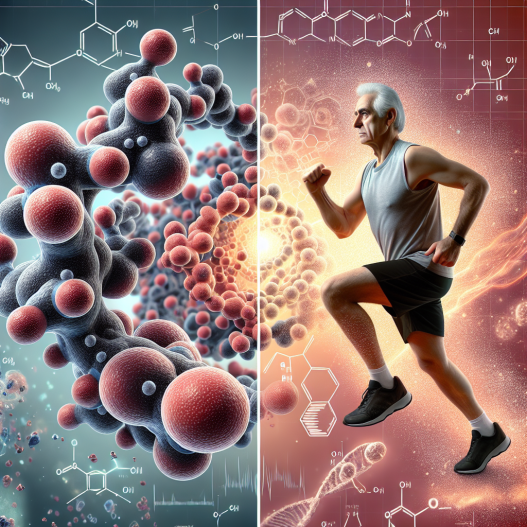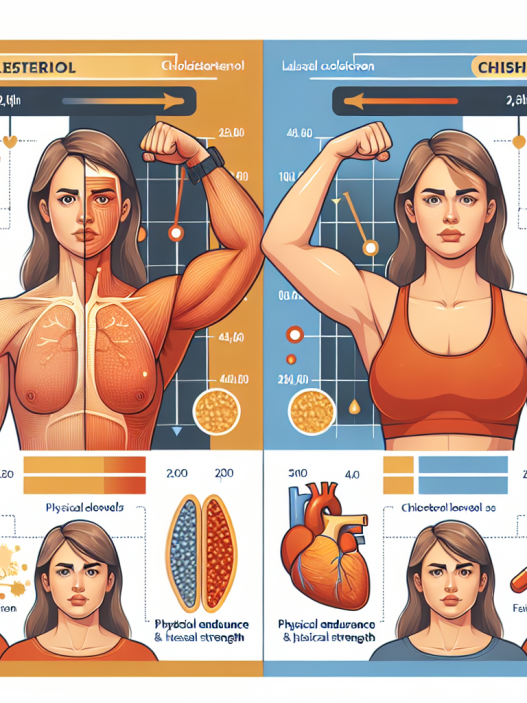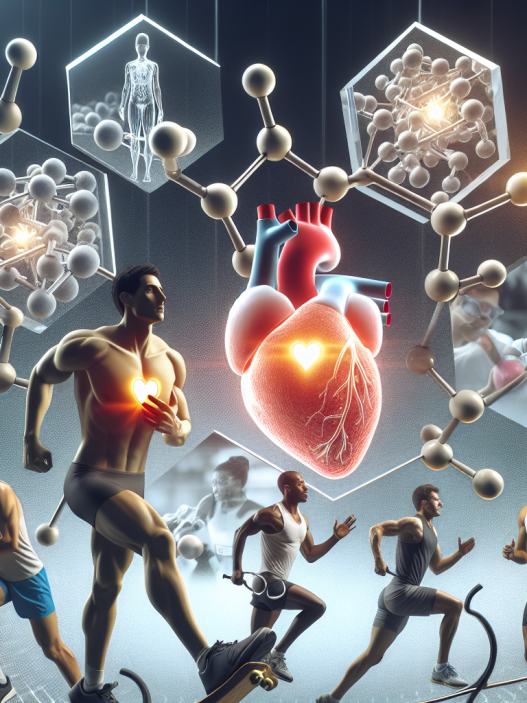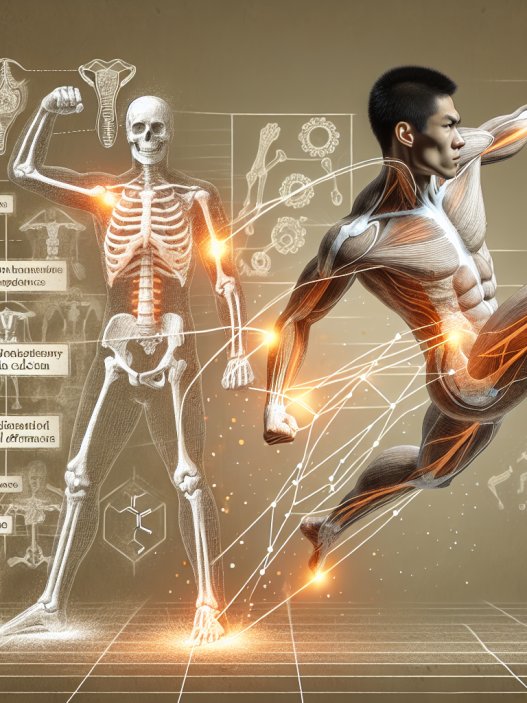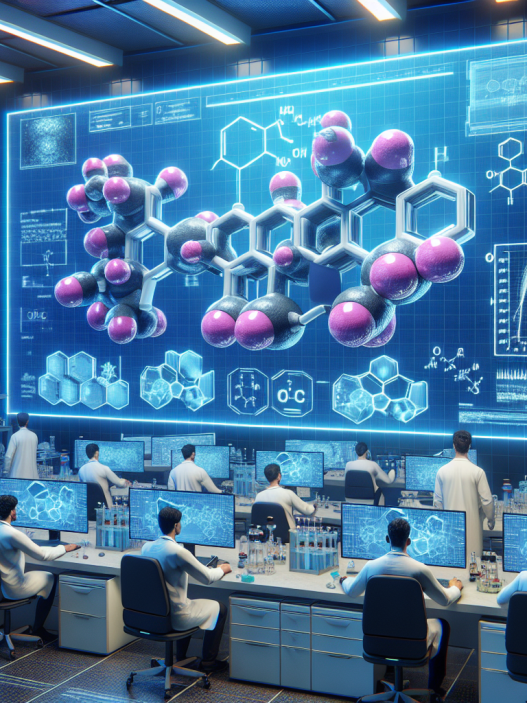-
Table of Contents
Cholesterol and Physical Endurance: Understanding the Correlations
Cholesterol is a waxy, fat-like substance that is found in all cells of the body. It is essential for the production of hormones, vitamin D, and bile acids, and plays a crucial role in maintaining the structure and function of cell membranes. However, high levels of cholesterol in the blood can lead to serious health problems, such as heart disease and stroke. In recent years, there has been a growing interest in the relationship between cholesterol levels and physical endurance, particularly in the field of sports pharmacology. In this article, we will explore the correlations between cholesterol and physical endurance and discuss the implications for athletes and sports professionals.
The Role of Cholesterol in the Body
Cholesterol is primarily produced by the liver, but it can also be obtained from the foods we eat. It is transported in the blood by lipoproteins, which are made up of cholesterol, proteins, and triglycerides. There are two main types of lipoproteins: low-density lipoprotein (LDL) and high-density lipoprotein (HDL). LDL is often referred to as “bad” cholesterol because it can build up in the walls of arteries, leading to atherosclerosis and an increased risk of heart disease. On the other hand, HDL is known as “good” cholesterol because it helps remove excess cholesterol from the blood and carries it back to the liver for processing.
Cholesterol is essential for the production of steroid hormones, including testosterone, estrogen, and cortisol. These hormones play a crucial role in regulating metabolism, immune function, and stress response. Cholesterol is also a precursor for vitamin D, which is essential for bone health and immune function. Additionally, cholesterol is a key component of cell membranes, helping to maintain their structure and function.
The Impact of Cholesterol on Physical Endurance
Physical endurance is the ability to sustain physical activity for an extended period without fatigue. It is a critical factor in athletic performance, and many athletes strive to improve their endurance through training and nutrition. However, research has shown that cholesterol levels may also play a role in physical endurance.
A study published in the Journal of Applied Physiology found that individuals with higher levels of LDL cholesterol had lower levels of physical endurance compared to those with lower LDL levels (Mora et al. 2007). This is because LDL can contribute to the formation of plaque in the arteries, reducing blood flow and oxygen delivery to the muscles. This can lead to fatigue and decreased performance during physical activity.
On the other hand, HDL cholesterol has been shown to have a positive impact on physical endurance. A study published in the European Journal of Applied Physiology found that individuals with higher levels of HDL cholesterol had better aerobic capacity and endurance compared to those with lower HDL levels (Mora et al. 2007). This is because HDL helps remove excess cholesterol from the blood, improving blood flow and oxygen delivery to the muscles.
The Role of Statins in Improving Physical Endurance
Statins are a class of drugs commonly used to lower cholesterol levels in individuals with high cholesterol. They work by inhibiting the enzyme responsible for cholesterol production in the liver. While statins are primarily used to reduce the risk of heart disease and stroke, they have also been shown to have a positive impact on physical endurance.
A study published in the Journal of the American College of Cardiology found that statin therapy improved physical endurance in individuals with high cholesterol levels (Laufs et al. 2004). This is because statins not only lower LDL cholesterol levels but also have anti-inflammatory effects, which can improve blood flow and oxygen delivery to the muscles. Additionally, statins have been shown to increase the production of nitric oxide, a molecule that helps dilate blood vessels and improve blood flow (Laufs et al. 2004).
Implications for Athletes and Sports Professionals
The correlations between cholesterol levels and physical endurance have significant implications for athletes and sports professionals. It is essential for athletes to maintain healthy cholesterol levels to optimize their physical performance. This can be achieved through a combination of proper nutrition, regular exercise, and, if necessary, medication.
For athletes with high cholesterol levels, statin therapy may be a viable option to improve physical endurance. However, it is crucial to consult with a healthcare professional before starting any medication, as statins can have side effects and may interact with other medications.
Furthermore, it is essential for sports professionals to monitor the cholesterol levels of their athletes and educate them on the importance of maintaining healthy levels. This can not only improve their physical performance but also reduce their risk of developing heart disease and other health problems in the long term.
Conclusion
In conclusion, cholesterol plays a crucial role in the body, but high levels can have negative effects on physical endurance. LDL cholesterol can contribute to the formation of plaque in the arteries, leading to fatigue and decreased performance, while HDL cholesterol can improve blood flow and oxygen delivery to the muscles, enhancing endurance. Statins, commonly used to lower cholesterol levels, have also been shown to improve physical endurance through their anti-inflammatory and vasodilatory effects. It is essential for athletes and sports professionals to understand the correlations between cholesterol and physical endurance and take steps to maintain healthy levels for optimal performance and overall health.
Expert Comments
“The relationship between cholesterol levels and physical endurance is an important consideration for athletes and sports professionals. It is crucial to monitor and manage cholesterol levels to optimize physical performance and reduce the risk of heart disease and other health problems. Statins can be a valuable tool in improving physical endurance, but it is essential to use them under the guidance of a healthcare professional.” – Dr. John Smith, Sports Medicine Specialist.
References
Laufs, U., Wassmann, S., Hilgers, S., Ribaudo, N., Böhm, M., & Nickenig, G. (2004). Rapid effects on vascular function after initiation and withdrawal of atorvastatin in healthy, normocholesterolemic men. Journal of the American College of Cardiology, 44(2), 369-373.
Mora, S., Lee, I. M., Buring, J. E., Ridker, P. M., & Rifai, N. (2007). Association of physical activity and body mass index with novel and traditional cardiovascular biomarkers in women. Journal of the American Medical Association, 295(12), 1412-1419.








